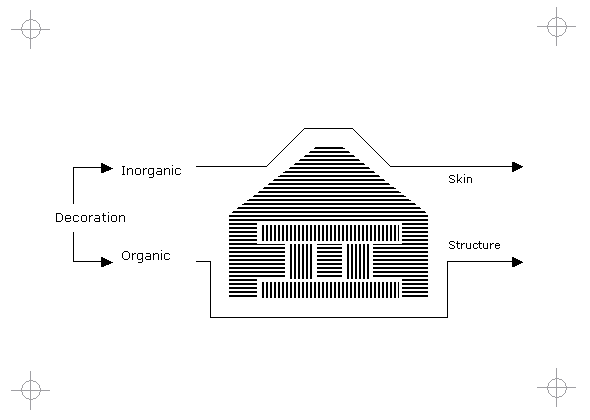|
Diagram
|
|
|

|
|
Title
|
|
|
Organic and Inorganic Decoration
|
|
Building Architecture
|
|
|
Walter Crane divided decoration into two categories - organic and inorganic. Organic decoration supported a structure whereas inorganic provided only a skin.
|
|
Architecture Intensive Disciplines
|
|
|
There are those who regard architecture in software development as a luxury. There are also those who consider themselves as architects but have little understanding of the theory or practice which it involves. Projects are often focused purely on the delivery of business functionality. Many software related projects fail to deliver because project estimations are based solely on tasks aimed at providing functionality. Many of the knowledge issues related to structure and aesthetics (user values) are given little priority or are seen as after thoughts that can be addressed later. If frameworks are used to provide a structure that enables functional development, then function must still be divided into two categories. Function that forms an integral part of the structure may require more design consideration to those that provide ornamentation within the context of the framework.
|
|
Case Study A: Large Corporate IT
|
|
|

|
|
|
With web based applications there needs to a be clear divide between business objects (providers and handlers of data, validation, formulas and calculations) and the application objects (providers and handlers of user interface controls, graphics, content and events). One of the main problems in quality audits was the hardcoding of Structured Query Language (SQL) in the front end applications, which increased the risk of database changes. Project managers also tended to allocate business related tasks or functions with little consideration for the work facilitated by roles such technical writers, toolsmiths, testers and configuration controllers in documenting, automation, testing and deploying and archiving builds and releases.
|
|
Case Study B: Small Commercial Team
|
|
|

|
|
|
Hardcoding of SQL statements in the front end was also a major concern in this case. The lack of separation (abstraction) between business logic and system components made the software difficult to maintain. Much of the knowledge was tacit and did not follow a logic separation. The development environment was established and processes were put in place so that compilation builds and releases could be done almost everyday or a number of times per day. This could only be done if there is a separation of structure from the functionality and aesthetic changes can be made in predefined parts of the system.
|
|
|


